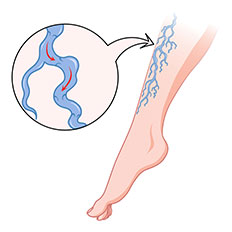How Poor Vein Function Leads to Leg Ulcers

Venous ulcers are a common type of wound that develop when circulation in the veins of the legs becomes compromised. They differ from pressure sores because their origin is linked to poor return of blood back to the heart. When valves within the veins weaken or are damaged, blood pools in the lower legs. Conditions such as varicose veins, previous blood clots, or chronic venous insufficiency can set the stage for these ulcers to form.
These wounds often appear on the lower legs, particularly near the ankles. They are usually shallow with irregular edges and may have thickened or hardened skin around the border. The surface of the wound may be moist, sometimes producing drainage, or it may develop crusty layers as healing stalls. The skin surrounding the ulcer may show signs of swelling, dark discoloration, or itchiness, which further indicates venous involvement.
Unlike other wounds that heal quickly, venous ulcers often linger without proper treatment. Because circulation is impaired, the body struggles to bring enough oxygen and nutrients to the injured area. This makes healing slower and increases the risk of infection. For patients, these wounds can cause discomfort, limit activity, and affect overall quality of life.
Treatment generally focuses on addressing both the wound itself and the underlying venous condition. Care may involve specialized dressings, compression therapy to improve circulation, and in some cases, procedures to treat the diseased veins. Elevating the legs, staying active, and wearing prescribed compression garments can support long-term management and reduce recurrence.
If you notice a wound on your lower leg that does not heal or shows signs of drainage and swelling, it is important to consult with our wound care specialist as early intervention offers the best chance for complete healing and improved comfort.
